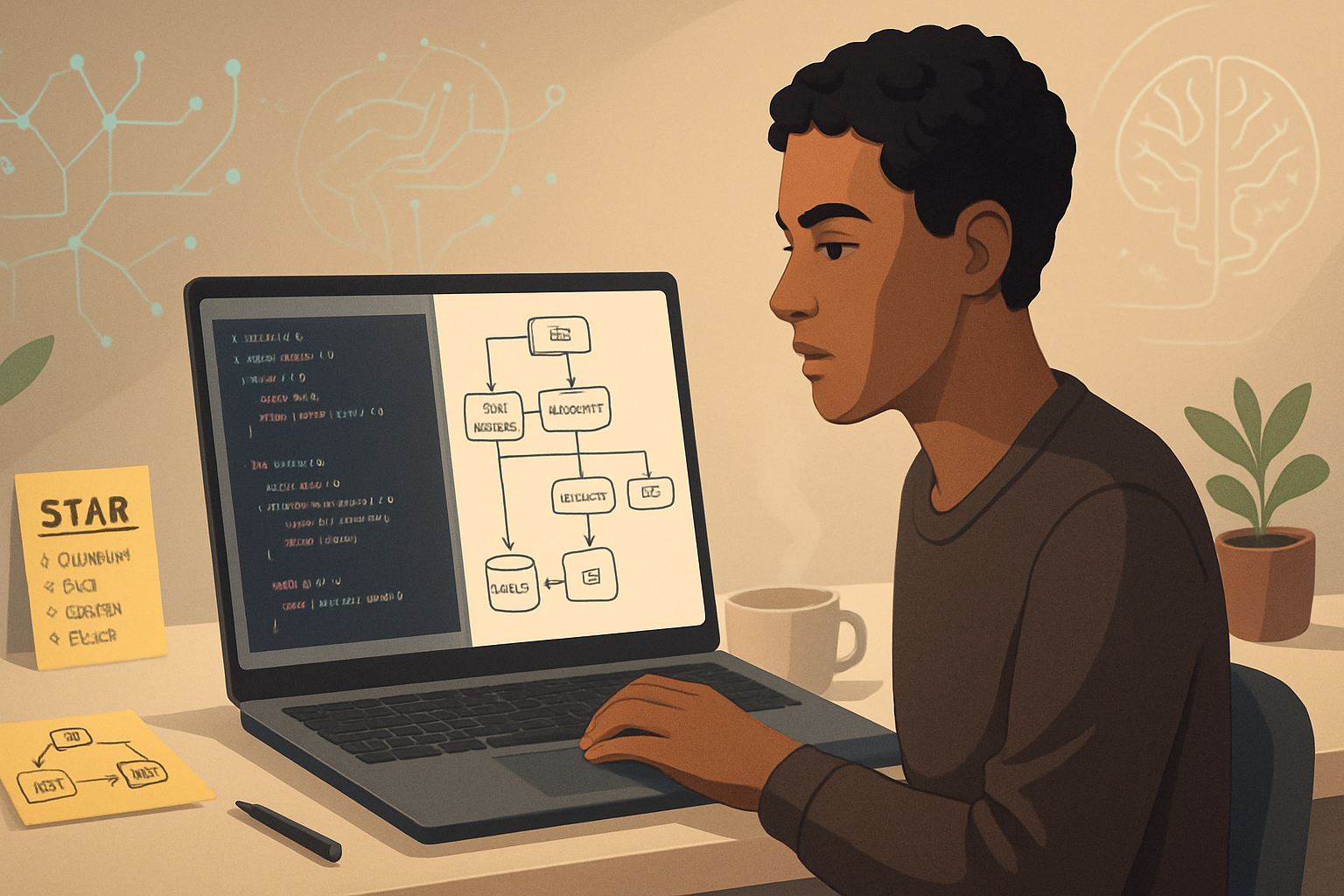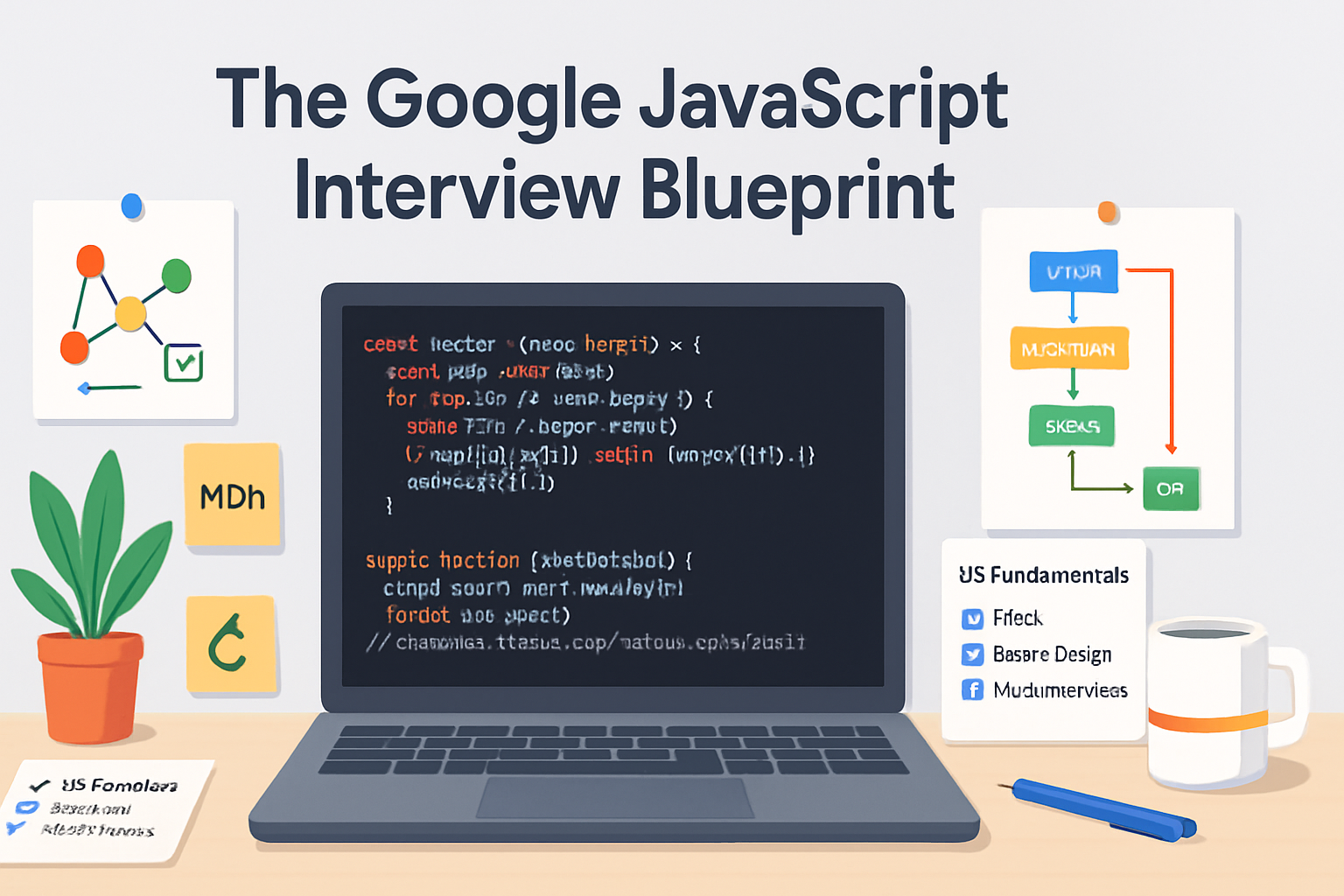· career · 7 min read
Decoding the OpenAI Interview Process: What You Need to Know
A detailed breakdown of the OpenAI interview stages - from resume screening and coding challenges to behavioral interviews and ML/system-design discussions - with actionable prep plans, sample questions, and practical tips to help you succeed.

Why this guide
Interviewing at OpenAI can feel daunting: roles span software engineering, machine learning research, safety, product, and more, each with different emphases. This article breaks down the common stages you can expect, what interviewers are assessing at each step, concrete sample prompts, and a realistic preparation plan so you can go in confident and focused.
Note: OpenAI’s hiring process evolves over time. Treat this as a practical synthesis of common patterns and recommended preparation resources rather than a guaranteed step-by-step script. For official openings and role descriptions, see OpenAI’s careers page.
At-a-glance: Typical interview stages
- Resume / application screening
- Recruiter screen (phone or video) - logistics, high-level fit
- Technical screen (live coding or take-home) - coding foundations or ML modeling
- Onsite or virtual interview loop (2–6 sessions) covering:
- Deep coding / algorithms
- System design or ML system design
- Research/problem-solving (for research roles)
- Behavioral / collaboration / leadership interviews
- Reference checks and offer discussion
(OpenAI roles vary: research-heavy roles have more paper/critique sessions; infra roles emphasize distributed systems.)
What interviewers are evaluating (by stage)
- Resume screening: clarity of impact, evidence of technical depth (projects, papers, shipping systems), alignment to the role.
- Recruiter screen: communication, motivation, compensation/availability logistics.
- Technical screen: problem-solving approach, coding correctness, testability, clarity under time pressure.
- Onsite loop:
- Coding: algorithmic thinking, complexity tradeoffs, edge cases, speed/clarity.
- System design: architecture, scalability, latency, monitoring, reliability, trade-offs.
- ML system design / research: experimental design, evaluation metrics, data & bias considerations, reproducibility, principled reasoning.
- Behavioral: collaboration, conflict resolution, prioritization, and ownership using structured examples.
Deep dive: Coding and algorithm interviews
What to expect
- Live coding on a shared editor (e.g., CoderPad / Zoom-based tools) or a timed pair-programming session.
- Problems of moderate to hard algorithmic difficulty for software roles: arrays, strings, trees, graphs, dynamic programming, hashing, concurrency bugs for systems roles.
- For ML engineering, expect implementation-level questions (data pipelines, feature engineering, API design) and sometimes algorithm questions.
How to prepare
- Solidify fundamentals: arrays, linked lists, trees, graphs, heaps, hashmaps, recursion, DP, two-pointers.
- Practice timed live-coding: use LeetCode and simulate a 45–60 minute coding interview with voice. (LeetCode)
- Learn to communicate aloud: narrate assumptions, state time/space complexity, walk through examples, and test edge cases.
Sample coding prompt
- “Given an array of integers and a target, return indices of two numbers that add up to the target.” (Easy - warm-up)
- “Given a rooted binary tree, return all nodes at distance k from a given target node.” (Requires tree traversal + parent pointers)
- “Design a lock-free concurrent queue or describe how you’d avoid race conditions when multiple workers consume tasks.” (Systems-focused)
References: LeetCode, Cracking the Coding Interview.
Deep dive: System design and ML system design
What to expect
- For software/infra roles: large-scale system design - design a URL shortener, design a real-time messaging system, or design a distributed feature store.
- For ML roles: end-to-end ML system design - building training pipelines, feature stores, model serving, monitoring and drift detection.
- Interviewers probe trade-offs (consistency vs. availability, batch vs. streaming), data schemas, instrumentation, reproducibility, and SLOs.
How to prepare
- Practice common system design prompts and learn to structure the conversation: goals & requirements → high-level architecture → components & data flow → scaling strategies → trade-offs & monitoring.
- Study ML system-specific topics: data ingestion, data labeling and quality, training orchestration, experiment tracking, model serving, rollbacks, A/B testing, and observability.
Sample ML system design prompt
- “Design a scalable system to train, validate, and serve personalized recommendation models updated daily. Include how you’d handle data freshness, feature pipelines, online inference latency, and model evaluation.”
Useful resources: System Design Primer, Designing ML Systems (Chip Huyen).
Deep dive: Research interviews (for research scientists)
What to expect
- Paper walk-throughs: you may be asked to present and defend a paper you authored or discuss a recent relevant paper.
- Problem-solving: formulating experiments, proving results, deriving equations, or proposing novel model improvements.
- Coding may be lighter but you’ll be assessed on clarity of thought, mathematical rigor, and ability to critique and iterate on ideas.
How to prepare
- Be ready to explain your past research in depth: motivations, baselines, experimental setup, hyperparameters, failure cases, and lessons learned.
- Practice whiteboarding derivations and thinking aloud through assumptions.
- Read recent OpenAI publications and other industry/academic work relevant to the role.
Sample research prompt
- “Given a paper that proposes a new RL algorithm with certain reported improvements, where would you probe first to validate the claims? What ablations or baselines would you run?”
Reference: OpenAI publications and blog for recent research examples - see OpenAI’s blog and publications.
Behavioral interviews - structure and examples
What interviewers want
- Evidence of ownership, teamwork, dealing with ambiguity, conflict resolution, and learning from mistakes.
- Clear and candid storytelling - specific situations, your actions, and outcomes.
How to structure answers
- Use the STAR method: Situation, Task, Action, Result. Practice concise but specific stories for:
- A time you shipped under tight constraints
- A time you changed course due to new evidence
- A disagreement with a teammate and how you resolved it
Example STAR outline
- Situation: Brief context.
- Task: What you needed to achieve.
- Action: Concrete steps you took (focus on your contributions).
- Result: Quantified outcome and what you learned.
Guide to STAR: Indeed - STAR technique.
Logistics: timing, take-homes, and remote interviews
- Many companies use an initial remote technical screen before a full loop. OpenAI often runs remote/virtual loops given the distributed nature of the workforce.
- Take-home assignments: may be offered instead of a live coding screen for some roles; treat them like a mini-project - prioritize clarity, tests, README, and reproducibility.
- For remote live coding:
- Use a quiet space, a reliable internet connection, and an external keyboard if on a laptop.
- Share your screen and narrate. When stuck, explain your thought process and ask clarifying questions.
Sample timeline from application to offer
- Application submitted → 1–3 weeks for screening
- Recruiter screen → 1 week
- Technical screen (coding/take-home) → 1–2 weeks
- Interview loop → scheduled within 1–4 weeks after screens
- Decision & offer → 1–2 weeks after loop (varies)
Recruiter communication frequency varies; if you haven’t heard after the stated window, a polite follow-up is appropriate.
A 6-week preparation plan (example)
Week 1–2: Fundamentals
- Brush up core algorithms & data structures; practice 1–2 problems/day on LeetCode; revisit previous projects and resume bullets.
- Prepare 3–5 STAR stories.
Week 3–4: Systems & ML
- Work through 2–3 system design prompts; sketch architectures and trade-offs.
- For ML roles: plan an experiment and write a short README describing dataset, metrics, and baseline models.
Week 5: Mock interviews
- Do 3–5 timed mock interviews (peers or platforms like Pramp, interviewing.io).
- Practice whiteboarding research explanations and paper walkthroughs.
Week 6: Polish and logistics
- Revisit weak areas, prepare environment (IDE, shared editor), and rest well before interviews.
Resources: LeetCode, System Design Primer, Cracking the Coding Interview.
Practical tips and dos/don’ts
Dos
- Ask clarifying questions early - it shows you’re thoughtful and reduces wasted effort.
- Talk through trade-offs; interviewers are often more interested in your reasoning than a perfect solution.
- Write tests or sanity checks for take-home projects and include a README.
- When discussing ML, always specify metrics and failure modes (precision/recall, fairness, data shift).
Don’ts
- Don’t panic if you don’t finish; focus on correctness, modularity, and communicating next steps.
- Avoid overclaiming. If you don’t know something, say so and describe how you’d find the answer.
Remote setup checklist
- Stable internet, headphones with mic, screen-sharing tool tested, code editor configured, extra monitor (optional), drinking water.
Negotiation and offers
- Know your priorities: base pay, equity, sign-on, role scope, and work location/flexibility.
- Don’t rush - request time to review the offer and ask clarifying questions about role expectations and team structure.
Common pitfalls and how to avoid them
- Lack of concrete examples: prepare STAR stories and quantified impact statements.
- No end-to-end thinking for ML roles: practice describing full pipelines, from data to deployment and monitoring.
- Poor communication under pressure: practice speaking while solving problems (mock interviews help).
Quick FAQ
- Q: How technical are OpenAI interviews? A: Very technical for engineering/research roles; expect deep probing into algorithms, systems, and ML fundamentals depending on the role.
- Q: Are take-homes common? A: They’re used selectively. When given, treat them as a demonstration of craftsmanship and clarity.
Parting advice
Interviewing is as much about demonstrating how you think as it is about what you already know. Structure your answers, communicate trade-offs, be honest about unknowns, and illustrate impact with specific examples. Preparation that mirrors the interview format (timed live coding, whiteboard system design, mock research talks) will pay dividends.
References & further reading
- OpenAI Careers: https://openai.com/careers
- Glassdoor - OpenAI interview reviews: https://www.glassdoor.com/Interview/OpenAI-Interview-Questions-EI_IE2682200.0,6.htm
- LeetCode: https://leetcode.com
- System Design Primer: https://github.com/donnemartin/system-design-primer
- Designing ML Systems (Chip Huyen): https://chiphuyen.github.io/ml-system-design-1/
- STAR interview technique: https://www.indeed.com/career-advice/interviewing/how-to-use-the-star-interview-response-technique
- Cracking the Coding Interview: https://www.crackingthecodinginterview.com/



